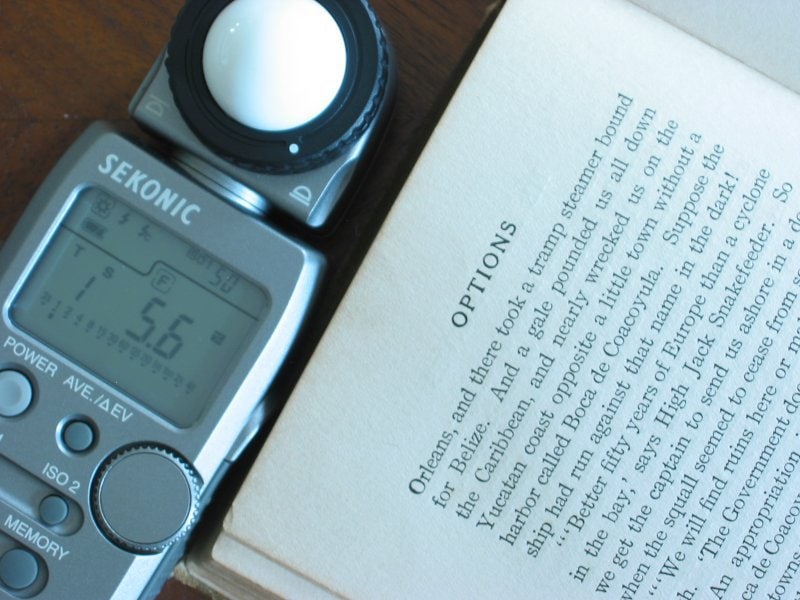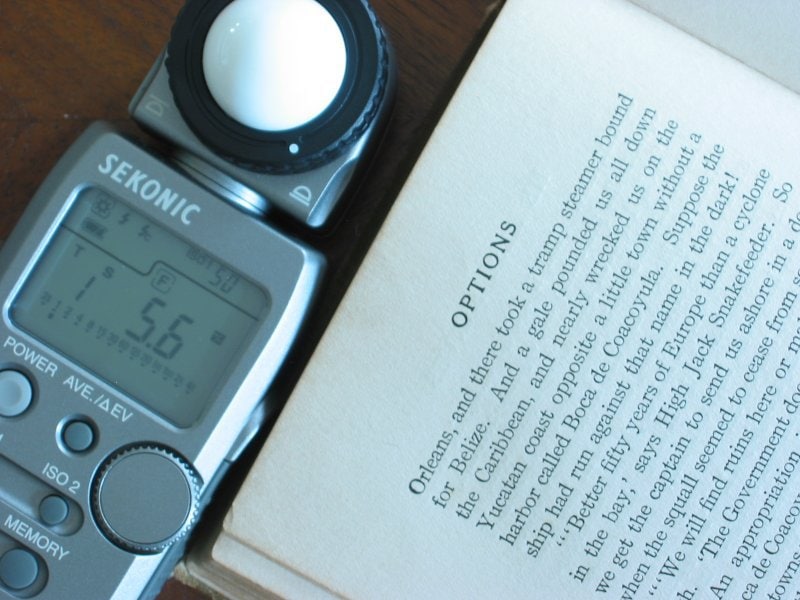You have already used it a few thousand times, but have you ever considered how a photometer really works? Do you know how to get the most out of it? Do you know that there is life beyond the one integrated into your camera? Well, if you have never asked yourself these questions or if you did and did not find the answer, I hope today's article will help you
WHAT IS A PHOTOMETER?
To begin with, if we want to be perfectionists, when we refer to the photometer , we should talk about an exposure meter , because not all photometers are designed to measure light, there are also those designed to measure color temperature (colorimeter) and not to offer us values. of exposition. On the other hand, exposure meters, as their name suggests, are designed to offer exposure values.
The exposure meter (or light meter for the less perfectionist) is designed to measure the intensity of light in the scene and based on this, it gives us certain exposure values (shutter speed and/or aperture depending on the shooting mode in the camera). that we are working).
Once the terminology is clarified, we will continue as we have been doing all our lives, with the term photometer, which, for those of us who had not thought of using colorimeters, is already doing well ?

WHAT TYPES OF PHOTOMETER ARE THERE?
Basically there are 3 types of photometers: those that measure reflected light, those that measure incident light, and those that can measure both types of light.
REFLECTED LIGHT METER (OR EXPOSURE METER)
The photometer or reflected light exposure meter measures the light reflected by the people or objects we are photographing. This means that the exposure values that the reflected light photometer will offer us will depend on the tones of the objects , since objects or people with lighter tones reflect more light than objects or people with darker tones .
That is, a person with a white complexion will give different exposure values to a person with a darker complexion.
The photometer that integrates your camera is one of these ? .
ADVANTAGES OF THE REFLECTED LIGHT PHOTOMETER
It comes built into your camera, you can't forget it, you don't have to buy it, you don't have to carry it, and if you get to know its shortcomings, you can work perfectly with it in most situations.
DISADVANTAGES OF THE REFLECTED LIGHT PHOTOMETER
Since it does not reflect the real light, but the one that things reflect, it is very easy to get lost in situations where we have several light inputs , or in situations where light tones abound (thinking that there is more light than there really is). and consequently underexposing the scene) or where the dark abounds (thinking that there is less light than there really is and consequently overexposing the scene).
That is, the integrated light meter will work well when the tones of the scene are close to medium gray , which is the reflectance tone that is considered standard for a scene, and the one you use to work. The more it differs from that tone, the more chance you have of having a wrong exposure.
Do you remember that we have ever talked about how snowy landscapes fool the light meter into thinking that there is more light than there really is? And how the value it gives us makes the snow gray instead of white when trying to compensate for what you consider to be an excess of light? Well, that's the fault of the reflected light meter.

INCIDENT LIGHT METER (OR EXPOSURE METER)
The incident light meter or exposure meter measures the actual light intensity of the scene that falls on the subject regardless of the object or person we are photographing and offers us exposure values accordingly. That is, whether the object is white, black or brown, the exposure value that it offers us will be the same.
ADVANTAGES OF THE INCIDENT LIGHT PHOTOMETER
It is the one that allows us to really know the light of the scene regardless of its color or shades. Thus the exposure values are not perverted and the light meter is not fooled .
Likewise, it allows us to know the value of the different lights in a scene , what exact difference in diaphragms there is between some lights and others (light contrast), and what real light intensity the scene has.
Consequently, it is the more accurate of the two.
DISADVANTAGES OF THE INCIDENT LIGHT PHOTOMETER
You have to buy this photographic accessory , load it, learn to use it, and not forget it ?

HOW DO PHOTOMETERS WORK?
We have already commented that photometers measure light (reflected or incident) and provide us with exposure values that are, in principle, correct for the light in the scene in front of us.
HOW THE REFLECTED LIGHT PHOTOMETER WORKS
In the integrated reflected light exposure meter that our camera has, it is very important to correctly choose the type of measurement necessary for each scene and know how to interpret the result, since the correct or incorrect exposure of the shot will depend on it.
- Matrix or evaluative : It takes the exposure references from different points distributed in the frame and proposes an average exposure based on the different lights. It works well in most situations where there is not much contrast between light and shadow.
- Punctual : It measures exactly at the point that we indicate in the scene, focusing on it and ignoring the rest of the lights. It works well when we have a large difference in light between our center of interest and the rest of the scene.
- Partial: Similar to punctual but it covers a little more area in the image to assess the exposure.
- Center-weighted: Performs the measurement in the central area of the image to which it gives priority, although it takes into account the rest of the lights in the scene.
Likewise, we must choose a shooting mode . If we choose the manual mode , we are the ones who will have to adapt the values of the exposure triangle (ISO, shutter speed and diaphragm aperture) depending on what the exposure meter integrated in the camera indicates.
If we choose a priority mode , the photometer or exposure meter will offer us the value of the other variable of the exposure triangle. On the other hand, if we choose the automatic mode, the camera will make the necessary shutter speed, aperture and ISO adjustments that it deems appropriate.
Once the measurement mode and the shooting mode have been chosen, we must interpret the measurement offered by the exposure meter, and we do this through the histogram. The histogram helps us to know if the exposure is correct. That is, not only if we have made the correct adjustments so that the measurement in the photometer is at ¨0¨, but also if we have been able to interpret the exposure that it offers us correctly, finally achieving an image according to the scene.
HOW THE INCIDENT LIGHT PHOTOMETER WORKS
As we have already mentioned, the incident light photometer is the one that measures the light intensity of the real scene, regardless of the tone of everything that appears in it.
- We must choose an ISO manually, the same for the camera as for the external photometer.
- Then we must choose a shutter speed and indicate it to both the camera and the external photometer.
- Once we have the previous settings, we will measure the light for which we want to know the exposure values. The photometer will give us a result in the form of a diaphragm opening . If we vary the ISO or the shutter speed, the diaphragm will vary to give us a correct exposure value.
DO I NEED AN EXTERNAL PHOTOMETER?
Although the incident (external) light meter is better than the internal reflected light of our camera, the truth is that the latter is usually more than enough to function in most situations. Before throwing it away, the main thing is to learn what are the limitations of our integrated photometer, when it fails and why , and the tricks with which we can solve them.
Now, if your thing is portraiture or product photography , then I wouldn't hesitate, I would go for one of incident light without thinking too much about it ?


